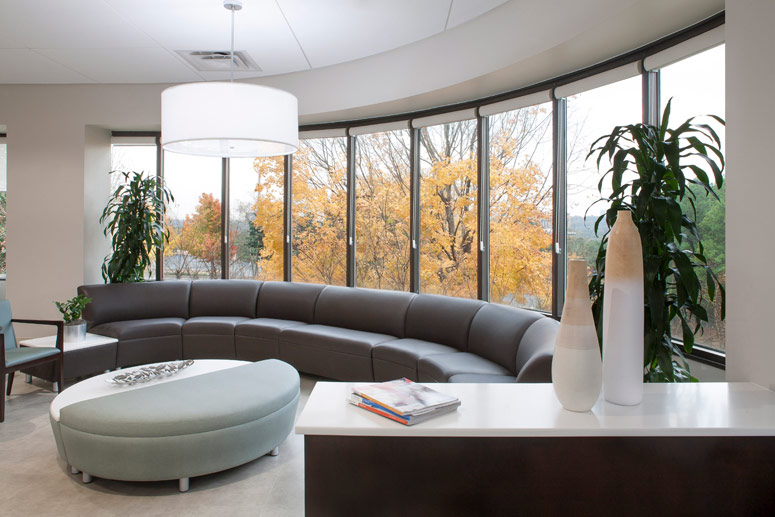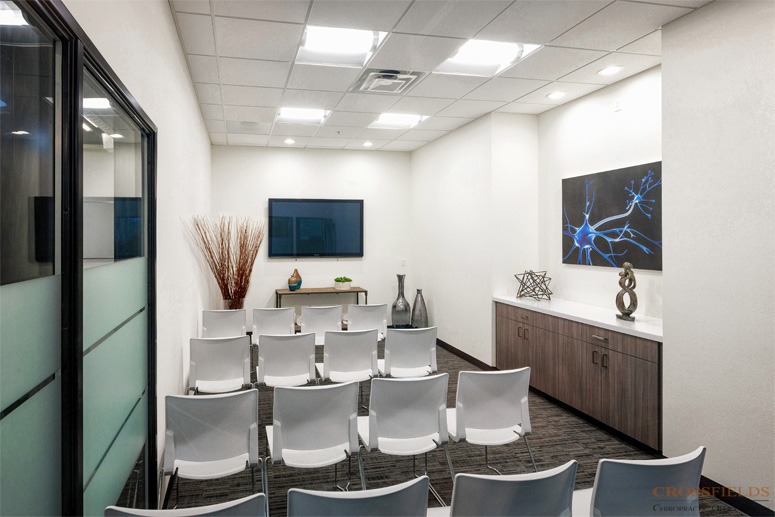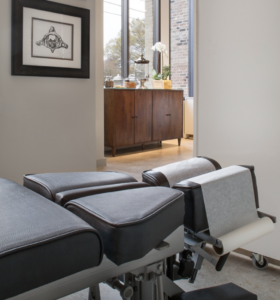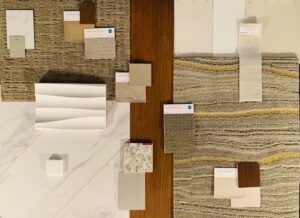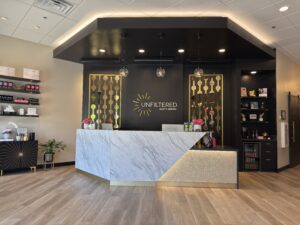Lighting: An often overlooked element of office design that can make an incredible impact.
Light affects people physiologically and psychologically and therefore has a huge impact on the atmosphere of your space. Light can set a mood you are trying to create and promote a sense of well being.
Curious about what atmosphere your office is portraying?
Download our 5 Point Designer Checklist to evaluate your image!
1. Types of Light
There are two main types of lighting: daylight (natural) and artificial light (man-made). Of the two types of light the healthiest and most important type of light for people is natural daylight.
Health Benefits of Natural Daylight:
- Improves mood/overall well-being
- Reduces stress/anxiety
- Improves mental awareness
- Increases oxygen intake
- Reduces heart rate
- Improves vitamin D synthesis in the body
- Reduces incidence of dental decay
- Improves results of light therapy in treating seasonal affective disorder (SAD)
- Improves results of light therapy for sleep disorders
Other Benefits of Natural Daylight:
- Improves productivity
- Improves scholastic performance of students
- Improves attendance among students and workers
- Improves color perception
- Improves visual clarity
- Improves plant growth
- Improves retail sales
Ideally, natural daylight flooding in your windows gives a warm, pleasant, inviting feeling, especially if it is morning sunlight. However, it is highly important for you to have control of that natural light. Depending on the orientation of your building and windows you could get a harsh glare that makes it uncomfortably hot or impossible to see a computer screen.
There are many different options you could employ to control glare and heat from the sun: awnings, window glazing, window filming, roller shades, mini blinds, curtains, etc. Our team can help you choose the best option for your budget, location, and aesthetics.
2. Light Levels
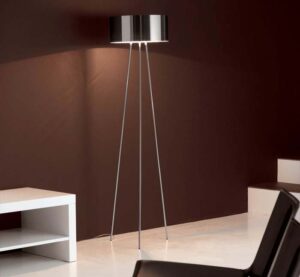
For example, you may want the reception area to be a vibrant space, full of energy; while you may want your adjusting area to be a more private or restful feeling. To create this contrast, you could design the lighting fixtures and location in your reception to be brighter and more cheerful. Then, create a separate lighting zone in the adjustment area by adding a dimmer switch, which will allow you to customize the amount of light to the patient’s need.
For additional spaces, there may be additional lighting considerations and zones. You may have a private room or area for massage or other types of therapies that are supposed to be quiet and relaxing. For this type of space, you may opt for no overhead lighting and instead have softer light from a lamp. In areas that are to be used for multi-use such as large therapy rooms, adding adjustable or multiple light sources allows you to change the light in accordance with the purpose of the room.
To learn more about light levels, check out this Office Lighting Design Guide from LED Lighting Supply.
3. How CrossFields Can Help
You can see that light can greatly enhance or detract from your atmosphere through the choices you make. Our team can guide you in considering the areas of your practice and how you want the patient to feel when they are in that particular space.
We take the time to think through each element incorporated in your space with you to give you a more functional and custom space that your patients will appreciate and enjoy coming back to. Contact us today to schedule your free consultation.

